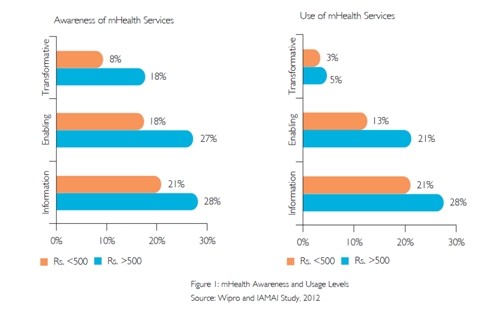Telco-led Transformation of Healthcare Service Delivery in India
Limited resources and a large percentage of the population living in remote areas have led to a large healthcare gap in India. At the same time, mobile communication has exploded with 900 million Indians now having access to some form of mobile connection. India’s healthcare system is ripe for innovation and Mobile Health (mHealth) has a potential to overcome healthcare challenges around access, cost, and quality. mHealth is the practice of medicine and public health supported by mobile devices
Telcos have a unique role to play in the delivery of healthcare in India. In addition to basic public health issues, hospital and physician supply is limited in rural areas. The vastly underserved healthcare market, combined with high mobile phone penetration and rapidly growing smartphone adoption creates ideal conditions for mHealth adoption. From offering high-quality network access to managing end-to-end service delivery, telcos can facilitate the effective delivery of mHealth services in multiple ways, including:
There are more than 500 mHealth projects operating globally, more than 50 in India1. Piramal E-swasthya2 is an example of such a project that enables setting up of a tele-clinic in remote areas supported by an e-diagnosis module and a call center. WHO carried out a global survey in 2009 in 114 member states and majority of member states (83%) reported offering at least one type of mHealth service3. The time and cost efficiency, coupled with better health management and information flow are contributing to the growth of mHealth.
The graph below indicates the current use of mHealth in delivering services for information, enabling and transformative healthcare in India to various income groups. Information services, generally offer one-way communication or message-board style question and answer services. Enabling services start to function as substitutes for traditional care and transformative services enable the collection of objective healthcare data.

However, adoption faces challenges. Adding new technology such as mobile creates concern because it is unknown. Security and privacy of healthcare information are identified as top barriers to mHealth adoption. The third most cited barrier to adoption is a general concern that mHealth applications will be too complex.
With literacy issues and over 120 widely-spoken languages, these concerns are legitimate. However, the perceived value and the lack of cost-effective, high-quality healthcare services in the marketplace gives mHealth the potential to be both a substitute and a complement to traditional, in-person healthcare services.
Telecom, healthcare and other organizations can develop mHealth strategies in two distinct market opportunities. In one model, healthcare access would be expanded to rural communities and bring services where there is limited capacity. In the other, care would be focused on the urban wealthy who have the ability to pay for costly monitoring services that stand to improve their health.
In India, taking healthcare to the underserved is a challenge. As the government looks to lay the foundation for an equitable society, healthcare delivery remains a critical challenge that mHealth is well suited to address. mHealthis no longer an optional choice for India – it is a must.
Sean Lunde- Solutions Consultant, Healthcare And Life Sciences Consulting Group
Sean Lunde is a solutions consultant for Wipro's Healthcare and Life Sciences Consulting Group, where he is responsible for mHealth and telehealth solutions